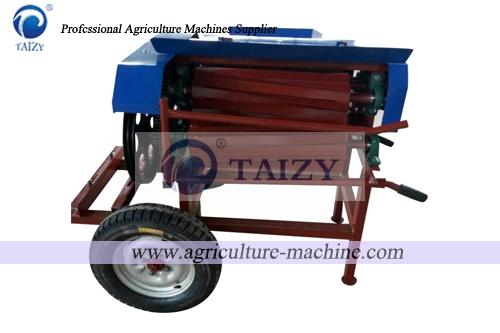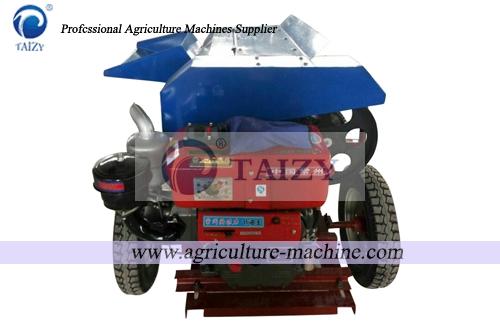The fiber content of the raw stem of flax is up to 30% of the original stem, and the other 70% is woody. The woody ingredients in the flax are peeled off.
An important process in the hemp process. The completion of the stripping task is the stripping part of the main structure in the kenaf decorticator, and the weight of the stripping part.
The main part is the stripping knife. At present, the blade that is successfully developed and widely used in China is a sheet scraper, and the blade is parallel to the stripping blade.
The main shaft of the cylinder and the drum are arranged in a tangential direction. Through the rotation of the drum, the sheet scraper continuously scrapes and squeezes the linen to break the stem.


In addition, the linen conveying and clamping device of the current kenaf decorticator is divided into two types: a method of clamping the belt with a press roller, and a belt on the slide of the stripping machine. The linen is held by the pressure of the spring on the pressure roller. In this way, the pressure roller is easily entangled, and the failure rate is high; the gap between the pressure rollers is insufficient due to the pressure.
The other is a relatively perfect iron clip link with a large belt to clamp the small belt, the iron clip link is riveted on the large belt, the small clamp belt runs through the slot of the iron clip link, and the linen is clamped to the small clamp In the gap with the iron clip, the linen is held by the weight of the iron clip, the friction between the linen and the small grip belt, and the iron clip link. However, there are two disadvantages: the gap between the clamping strip and the iron clip link is certain, and the increased amount of flax feed will make it impossible to clamp. Second, there is a gap between the iron clip and the iron clip link. The linen is less stressed between the gaps and is easy to fall off. Therefore, this method limits the yield of the kenaf decorticator and reduces the rate of hemp.
